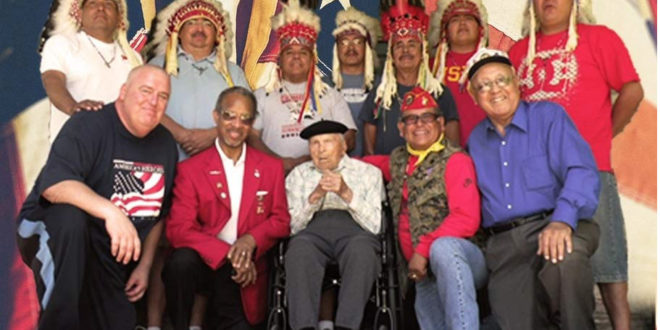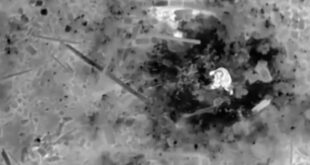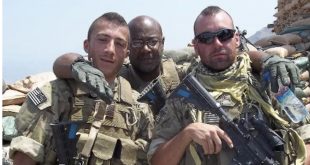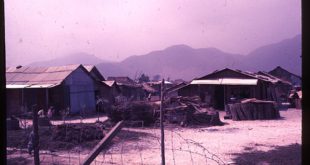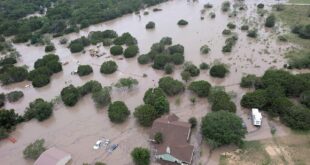
NAVY VETERANS
The principal core values the Navy follows are the bedrock for everyday guidance in how sailors in the Navy conduct themselves in their daily lives. These core values are honor, courage and commitment.
When you read about these brave sailors below look for the core values these brave souls lived by in the service of their country, as well as in the stories of them after their time in the Navy.
For twenty six years I’ve brought American veterans from all over the United States to high schools in Oregon to share their military experiences during times of war with the students. Over the years, as I became friends with many of these veterans, they began to open up and share with me. Many veterans refused to talk for years but reached out to me as they became older as they wanted their stories remembered. Even their spouses and children had never heard many of these shared stories. This book is also unique as it includes chapters from American veterans of many races, all of whom have served their country with great pride. We must not forget all of these men’s and women’s stories, lest we forget the cost they gave for our freedom. Author Ken Buckles: Their Story:
EUGENE MORGAN USS Indianapolis Survivors

September 14, 1920 – June 18, 2008 Read his obituary that he wrote before his death
In 2002, on the History Channel, there was a special on the sinking of the USS Indianapolis during World War II. I really looked forward to watching it because although a tragic event it was one of World War II’s most harrowing stories of survival.
The Indianapolis was a heavy cruiser that served as the flagship for the Navy’s 5th Fleet. During World War II it took part in various operations in the Pacific, such as Iwo Jima and the Battle of Saipan.
On March 31, 1945 just before the Battle of Okinawa it was hit by a Japanese Kamikaze pilot on its right side, the stern. Nine sailors died in the attack. Needing repairs, the ship returned to the States to be overhauled. As the war was beginning its final phase the men on the ship had thought they would be pulled from active service.
They were wrong when soon after it was soon repaired, it was returned to active service, and then received orders to undertake a top-secret mission to deliver highly classified cargo. All on board, even the captain, were unaware of what they were carrying.
On board was just one crate and two round containers. Little did they know they contained the internal components and enriched uranium materials that would be used to assemble the first operational atomic bomb.
It set sail on its mission of a high-speed voyage from San Francisco to a U.S. air base on the island of Tinian, part of the Mariana Islands, where it delivered its cargo. After which it was sent to Guam and then to the Philippines.
After delivering the cargo, the captain received a message stating that their return passage was safe with no Japanese submarines in the area. They were also going sail without the usual two destroyer escort because headquarters believed Japan was on its last leg, and therefore there was nothing to worry about. The ship and its crew left on what was to be a routine voyage.
About halfway on their voyage on July 30, 1945, a Japanese submarine captain, with ideas of giving his emperor one last prize before defeat, put two torpedoes into the Indianapolis. After her fuel stores were ignited from the torpedo hits the ensuing explosions ripped the ship in half.
The ship went down in just twelve minutes. With it went down approximately three hundred members of the 1200 men on board the ship. The remaining crewmen now found themselves stranded in shark-infested waters with little or no supplies except the life jackets they were wearing.
The survivors after being discovered only by accident four days later numbered only 316, many of which recounted harrowing stories about the days spent in the water. Many men died from exposure or dehydration, and some died from shark attacks. News of the tragedy was delayed from being reported until after Japan had announced its surrender.
After I sat mesmerized watching the program until its end, I immediately went to my computer and searched for information on Indianapolis survivors. I just had to find someone to visit Living History Day to talk about the sinking of the Indianapolis.
Eugene Morgan was that someone. The site I had found included his photograph as well as some basic information. He was the only survivor listed from the Pacific Northwest, and he lived in Seattle, Washington, only three hours away by car from Portland.
Using the White Pages internet site, I found Eugene’s telephone number and called. He was extremely friendly and sociable. We talked for at least forty-five minutes during which I told him about our veteran’s events.
I asked if he would come and be an honored guest, where he would have the opportunity to share his personal Indianapolis experience with Milwaukie High School students. I sent him all the information about our event as well as a formal invitation. I soon received a reply of acceptance.
That fall Eugene attended our Living History celebration. He had everyone intently listening as he described the scene of the Indianapolis going down and the plight of the sailors in the water fighting to survive the next four days.
Afterwards, when I complimented him on what a great job he had done, he confided in me that this was the first time he had ever spoken to students about his experiences. Thereafter, Eugene would go on to never miss one of our Living History Days.
Eugene absolutely loved talking to high school students, so I would always arrange for the largest number of students to hear him speak. I listened to him tell his story many times and he always did it in the same way. It was always great but he always did it with his emotions held back, especially when he described what his shipmates and he endured.
It was as if he could push play on a recording device, and out would come the pre-recorded narration of his personal experiences being read by a reporter merely reading a report of the incident. And upon finishing he would push stop, then rewind the tape to be used in next year’s Living History talk.
I have seen that trait in so many veterans over the years. The determination not to ‘go there’ and to not become emotional. I have come to realize that this is their way of dealing with those memories. That lack of emotion however did not disguise the drama in Eugene’s story, which is why he always spoke to a large number of students.
“It was almost midnight, and I was below, trying to sleep when the first torpedo hit,” he would begin. “I was in my skivvies—what you young people would call your underwear.”
“I was able to make it topside. The ship was sinking, and the captain ordered us to abandon ship. I jumped into the ocean, which was completely covered with oil that had spilled into the water from the explosions. It got into my eyes, nose, and mouth. I couldn’t see much of anything at all. There were fires all over the surface of the water. The air was filled with the screams of wounded and dying sailors everywhere.”
“Knowing I was covered in oil and with fires everywhere, I swam like hell to get away from there. Luckily, I was able to swim to one of the larger life rafts. It was already full of wounded sailors. So, I joined others hanging on to the sides of the raft.”
“I was absolutely miserable and terrified. There was no way to get the oil off my face. We were floating in water covered everywhere with oil. The water was cold, and I felt completely helpless to do anything but hang on to the side of the boat.”
“When daylight came the warmth of the sun felt good, but in no time it turned extremely hot. The oil on my face made the heat even worse. I couldn’t wait for the sun to go down. Also, we had no fresh drinking water. At night we were freezing cold, and in the day, we suffered from scorching heat.”
“For those four days in the water we had nothing to drink or eat. During that time, I saw men lose their minds and go mad. Some claimed they could see an island that they could swim to where there was food and water. So, they’d just swim away, never to be seen again. Others said they could dive down to the sunken Indianapolis and get inside for safety, food, and water. We couldn’t talk any sense into those who went insane.”
“Some sailors began attacking others because they thought the oil on someone’s face made them look Japanese. And there were others who gave into thirst and drank the saltwater. It drove them crazy and they became violent. None of those who drank saltwater made it.”
“On the first morning we could see the sharks were eating the dead bodies in the water. When they finished with them, they started to turn to us. It was sheer terror as sharks swam by and bumped up against my leg. Many times I punched the sharks to drive them away. Watching men being pulled under and thrashed about screaming and fighting for their lives is a memory I’ll never forget.”
“Something else I’ll never forget,” Eugene would say at this point, “is that day when the PV-1 Ventura plane on a routine patrol spotted us. It was an absolute miracle. After that those of us still alive were rescued.”
It was always such a heart-wrenching tale of survival that by the end he always had many students in tears. At that point, Eugene would always try to lighten the mood by saying, “My parents both immigrated from Poland, so I’m a full-blooded Polish American. The reason I survived years ago, I guess, is the sharks didn’t like Polish sausage.”
A few years after Eugene had spoken at several Milwaukie High Living History Days, I received a call from him. As we began to talk, I could tell in his voice that he was really bursting to tell me something.
“This is amazing, Ken,” he began. “I was asked to speak to students at a school in Olympia. I gave my usual talk, including how I will never forget seeing the PV-1 Ventura come to our rescue. At the end of my talk, a girl raised her hand. She told me it was her grandfather who was the pilot of that plane!”
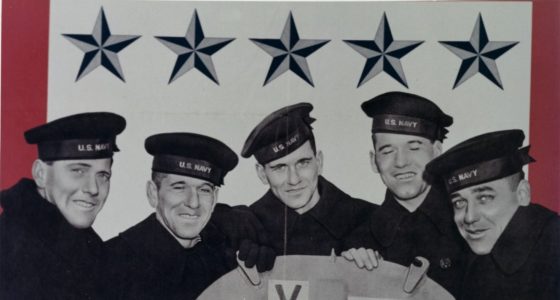
The very next time I heard Eugene address our students, he had added that story to his presentation.
Eugene enjoyed speaking to students so much that he did not merely come down from Seattle for only Milwaukie High’s Living History Days, but he also attended all other events that we held in schools all across Oregon.
In 2006 we put on an event at Nestucca Middle School on the Oregon coast. We drove down to Pacific City where the school was on Thursday early in the afternoon. We checked into the hotel and we all decided to meet in the parking lot in the afternoon and walk to the beach to the shoreline. In our group we had a couple of Native American spouses who had never been to the beach before.
As soon as we checked into the hotel we decided that we wanted to walk on the beach. As we were walking towards the water, I noticed Eugene and Bill Chisholm were walking slowly together behind everyone. I asked Bill later about it.
Bill told me, “As I was following everyone else the beach I realized Eugene had stopped walking and was about 10 yards behind me. I turned around and asked him if he was coming with us. I didn’t even think about him having issues with the water.”
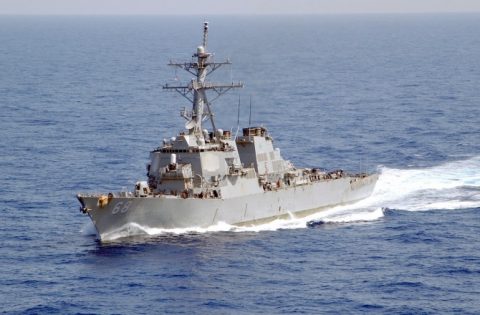
Bill knew that Eugene often spoke at events of his dislike of water. I learned that when Eugene was in the water after the sinking he had thought he saw some food so he swam toward it. But before he got to it he was attacked by a shark. Luckily, the shark swam away before attacking him again.
Eugene still has the scars on his backside to remind him every day of the attack. Also over the days in the water, Eugene could hear the screams of the men who were unable to escape being attacked. A few years before Eugene had told me that almost every single night since 1945 he has awoken from nightmares in which he is back in the water fighting off sharks.
He told me, “I wake up, and just walk around for a while and then finally am able to go back to sleep. And you know what else; I can’t stand being near any body of water, even a swimming pool. I just can’t.”
Bill continued to tell me about that day on the beach. “Eugene said to me, ‘No, I can’t do that, Bill.’ It was when I saw the worried look on his face that it hit me. I thought, ‘Bill, you dumbass, why didn’t you remember!’ So I said, ‘I’m so sorry, I should have known better’. And he told me, ‘It’s Okay, I think I’ll just sit on this log and wait for everyone.’ And I said that I would join him.”
“We started talking about at first about how beautiful a day it was. Then just small talk, I don’t remember the conversation but we did not talk about the water or the Indianapolis. After a while I asked him if he wanted to go to the pub and I would buy him a beer. Eugene loved the idea.”
The two of them were waiting for us on the outside patio of the pub after we finished walking on the beach, and we all went into the banquet room for dinner.
In 2008, I asked Eugene if he was well enough to join an event we were going to be doing in Central Oregon. He told me he would try his best to be there. Little did we know that he came disobeying his own doctor and daughter who ordered him not to go because he was experiencing serious health issues. Ignoring his family’s pleads, and unbeknownst to all of us the seriousness of his illness, he drove his car to Portland, where he then met us before we left for the trip to Redmond, Oregon.
He arrived and when we asked him if he was okay, because he did not look well, he said he was fine and just a little tired. Little did we know just how serious his condition was when we set out for Redmond. I was still very worried and kept asking him if he was okay, and he kept assuring me he was fine always with a smile on his face.
While in Redmond we could see that he really was not doing well, so we still kept asking him. I think he finally figured out that we knew he was not in good shape. Shortly after realizing we knew he showed me how bad he was doing when he rolled up his pant leg.
His leg from his sickness was in terrible shape. This was one of the reasons why he was moving around so slowly. Even in his pain he was still thinking about others and he did not want to let any of us down by saying he couldn’t be there or that he couldn’t do it.
This was a man of his word, he said he would be there and nothing would stand in his way. He was truly being a Navy man at that moment. Loyalty and honor to the end, over pain, agony, and letting down your crewmates.
A short time after that trip, I received a call from one of his children informing me of my good friend’s death. I cannot put into words how devastated I was upon hearing of his passing. A short time later, his family asked me if I would speak at his memorial service. I was honored but doing so was extremely difficult because I had a hard time holding in my emotions. I miss him greatly still.
Whenever I think about him I have only to close my eyes to see Eugene in his USS Indianapolis t-shirt, his Indianapolis jacket, and his Indianapolis cap, which he wore all the time, with, as always, a wonderful smile upon his face.
The memorial was a beautiful service. The Navy sent a squad of sailors, who performed the Last Roll Call with a Navy Bell. In addition, because Eugene had been a Seattle firefighter for thirty-five years, the Seattle Fire Department followed the Naval squad with a traditional firefighter’s memorial ceremony. Everything was perfect down to the last detail. It was exactly the ceremony Eugene Morgan deserved. However, another service was yet to follow.
Eugene’s last dying wish was to be able to rejoin his shipmates in the Pacific where the USS Indianapolis went down. Most would think this request as very difficult to impossible. However Eugene’s grandson was U.S. Navy Machinist’s Mate First Class Jason Witty, who set out to make his grandfather’s dream come true.
Jason, who had enlisted in the Navy to honor his grandfather, served on the submarine the USS Ohio. It was there that he put in a request to one of his ships officers if his grandfather’s wish could be granted. The request went up the chain of command all the way to the captain and was approved.
On October 2, 2008, the USS Ohio surfaced at sea, and in a somber ceremony over a peaceful sea, Eugene’s grandson Jason performed his solemn task. A eulogy was read that was written by another of Eugene’s grandsons followed by a Rifle Detail which fired a three-shot salute.
The ceremony concluded when Jason moved to the side of the deck and scattered his grandfather’s ashes into the wind and to the water below at roughly the same spot in the Pacific where the Indianapolis went down.
Boatswain Mate Second Class Eugene Morgan was at last reunited with his shipmates.
Eugene Morgan, my good friend until the end, passed away at the age of 87 in June of 2008.
When Eugene Morgan attended our first Living History Day, he invited me to the USS Indianapolis Survivors Annual National Reunion, and he continued to invite me every year after that right up to the time he passed away. I so regret not having gone together while he was living. However, in 2013, my wife Malinda and I did travel to Indianapolis to finally attend the reunion.
When we decided to finally attend, I called the group’s national president, Harold Bray, and after informing him about our program honoring veterans, I asked if I could speak at the reunion.
“Of course, you can,” Harold replied. “I know who you are. Eugene and I were close friends. He told me all about you. In fact, he was always after me to go out to Oregon for one of your Living History Days.”
As part of my presentation to any veterans’ organization, I always ask Malinda to sing a couple of patriotic songs, of which she is always a big hit. The organizers of the union were so impressed by her they asked if she would please sing the national anthem and ‘The Lord’s Prayer’ during their annual Sunday Memorial Service, a program to remember all who were lost with the sinking of the USS Indianapolis and the survivors who have passed since the last union.
That year there were fifteen survivors and nearly one hundred and fifty guests in attendance. These were mostly the adult children and grandchildren of both the living and the deceased survivors.
At the event, there were many guest speakers, many were excellent and left a great impression upon me. One such was from a man who as a six-grade student helped exonerate Captain McVay whom many believed was unfairly court-martialed for the sinking of the Indianapolis.
Lieutenant Hunter Scott, at the time a Naval MH-60R Seahawk helicopter pilot based in San Diego spoke to us how, in 1996 as an eleven year old boy he had watched the movie Jaws with his father and became fascinated with the USS Indianapolis story.
This sixth grader set out to interview as many of the living survivors as possible, he ended up talking to nearly 150. In addition, he reviewed as many of the documents of that fateful night as he could find. In his research, he concluded that Captain McVay was innocent of the charges against him and he set out to exonerate him.
In the Navy’s history, Captain McVay is the only captain in the history of the United States Navy to have been subjected to court-martialing for losing a ship sunk by an act of war.
On November 6, 1968, at the age of 70, Captain Charles McVay committed suicide at his home in Litchfield, Connecticut. He left no note, but it was speculated that his mental health had been in decline; In addition, he was extremely sad from missing his wife, the woman who stood by his side supporting him for many years, who had died from cancer a few years prior.
Even more interesting that he was also suffering from having received the letters of hate and phone calls from lost men’s families and relatives who blamed him for their loved one’s death. letters and phone calls that his wife would usually intercept and keep from him, of which, after her death it was rumored that he found the box that his wife had put them into so he would not have to see or hear their spews of vitriol. Something his loving wife had shielded him from over the years.
Captain McVay was found holding in one hand his service revolver, and in the other, he held a good luck charm, a toy sailor he had received as a child.
After having gathered all his research Hunter went to his local congressman and presented his case for exoneration of Captain McVay. His congressman was so impressed with Hunter’s plea that Hunter soon appeared with survivors in front of Congress to argue that McVay should be exonerated.
His direct testimony and the testimonies of the survivors led Congress and President Clinton on October 30, 2000 to exonerate Captain McVay, clearing his record of any blame for the sinking of the USS Indianapolis.
It is not surprising that Hunter Scott went on to join the Navy and choose a career in Search and Sea Rescue.
I was also amazed to learn that in attendance that day was Atsuko Iida, the granddaughter of Mochitsura Hashimoto, the Japanese submarine commander who sank the USS Indianapolis. The part her grandfather played not only in the sinking of the ship but also in the subsequent trail of McVay in its aftermath is extremely interesting.
Her grandfather was flown to Washington D.C. to testify on behalf of the Navy. Their strategy was to call Hashimoto as a witness to show support for the charge against McVay for negligence in his failure to zigzag the ship to avoid being hit.
The Navy however learned from the pre-trial statements it had obtained that Hashimoto’s testimony would actually show support for McVay instead of the conviction it wanted. When the time came for the Navy to carry out direct examination, specifically the issue of zigzagging as an effective measure of evasion, they proceeded to keep silent on the issue. Hashimoto later testified for the defense that the ship would have been sunk regardless of whether it was zigzagging or not.
Despite this damaging testimony, in its closing arguments the prosecution declined to even reference it. In addition, McVay’s attorney declined to cite Hashimoto’s testimony supporting the defense of McVay. A grievous injustice had just occurred.
Even more interesting was that Hashimoto was also part of the effort to exonerate McVay. In 1999, he wrote a letter reiterating his statement at the initial trial, that there would have been no difference in the outcome.
Hashimoto also became a Shinto priest after the war and traveled to Pearl Harbor to pray for the men whose deaths he had caused, and he also met there some of the survivors at Pearl Harbor, who forgave him for his actions.
Mochitsura Hashimoto passed away at the age of 91 in October of 2000, only five days before Congress passed the resolution to exonerate posthumously Captain McVay.

At the reunion, I was now attending Hashimoto’s granddaughter Atsuko was accompanied by her husband and their three children. I learned that they had attended these reunions for a number of years. There was a noticeable bond between her family and the survivors and their families. They were like old friends together.
Another attendee at the function was Alexes Marks Shuman. Her father, Lieutenant Adrian Marks, was one of the heroes who came to the aid of the Indianapolis survivors. Alexes played a powerful video recorded at a previous reunion thirty years ago.
The guest speaker on the video was Lieutenant Wilber Gwinn. On the late morning of the fourth day the Indianapolis sailors had been in the water, Lieutenant Gwinn was the Pilot Engineering Officer on a PV-1 Ventura Bomber flying in the area testing a new type of trailing antenna.
During the flight, he was informed by his crew of encountering trouble because the antenna had lost its test weight and it was now jammed and could not be reeled in back to the plane. He then told his co-pilot that he was going back to look at the problem.
The reel for the antenna was located in the back of the plane in the tail gunner’s hatch. After they freed the wire, he went to the plane’s blister, the small window located in the central fuselage of a plane that gets its name from looking like a blister on the skin.
He went there to stretch his neck, which was sore from hunching over in the confined space. As he was stretching, he happened to look out the window down to the sea below.
It was then that he noticed an oil slick on the surface of the water. Thinking he had just spotted oil from a disabled submarine, he immediately went back to the cockpit, and told his copilot they were going to go sub hunting.
The plane flew around and then started to descend with its bomb bay doors open ready to drop bombs when it arrived on the spot. What they found however was not the submarine they had hoped for but men waving from the water.
Not knowing who the men were they sent out an emergency message with their location and an approximation of the number of men in the water. After which they began to circle around the area to try to get a head count to estimate how many men were in the water. They dropped all the life jackets they had on board as well as canisters of water.
After their third time they regained altitude, again radioed for rescue planes as well as their position, and sent the message that they had spotted possibly over 150 men in the water. After radioing it in once again, they began circling the area so they could be a beacon for others they thought would be coming.
Another plane arrived to relieve Gwinn’s aircraft, in it was Gwinn’s squadron commander who ordered him to return to base as he was running low on fuel.
Soon after, another plane arrived being piloted by none other than Lieutenant Adrian Marks, whose daughter Alexes Marks Shuman was at the reunion I was now attending.
Lieutenant Marks now arrived at the scene piloting a PV-1 Ventura seaplane. The Navy had sent only a single aircraft to do a recon because it was unknown just who the men were in the water. He was also upon strict orders to only fly to the sight, investigate, and report what he saw.
Because his seaplane can fly at a slower speed then a bomber, he was able to get closer to the men to get a better look at the men in the water. What he saw when he flew in slow and low was that the men in the water were being bothered by sharks, and he saw bodies being eaten. Thinking this was the only group of men, he wanted to drop all his survival equipment, however he was ordered by the other plane to first survey the area before dropping it.
After flying around the area, seeing other groups of men, he then began to drop all the survival equipment he had on board as well as his plane’s survival gear, except for only one raft, which he kept for his crew.
Then knowing that no ship would be in the area for several hours and that he may not be able to take off again due to the rough seas he decided to land anyway. He took his seaplane in for a landing on the rough waters. After that rough landing, he and his crew began to pick up survivors.
They began to pull men out of the water, a difficult task considering they were in the high seas with large waves and the men had to climb a ladder to get to the hatch that was well above the water.
They were lucky that day to have a former high school wrestler, who still lifted weights, who began to reach down and then pull men into the seaplane. They taxied around to groups of men picking up and stuffing as many sailors as they could inside the plane.
Then with cabin space no longer available Marks ordered the men to be wrapped in parachutes and tied on the wings. Doing this caused the plane’s wings to be damaged making it impossible to take flight. Using every available space both inside and outside the seaplane, they were able to rescue 56 men.
There is one thing that I do remember when Marks’ daughter spoke, and I do not know if it is really true or not but I do remember it making me think about the brotherhood veterans seem to have while in the military and after they leave it.
Marks’ daughter said her father used to talk about the men they had helped to rescue. Being so many survivors there was not enough drinking water on the plane for all to drink, that meant they had to ration it out. The crew started passing around a canteen and asked the sailors– men who had gone for days in sea– to each drink only a little.
When the canteen was empty, it was refilled and passed on down the line. Not once did any of the sailors try to drink twice from the canteen, and several times, they reminded the crewman passing it around that they had already taken their sips. These men had just undergone an extremely life-threatening traumatic experience, and yet were being selfless.
Hearing about that happening made me think about how men in these kinds of situations, and especially more so in combat veterans, display such deep levels of camaraderie built from loyalty and honor in the line of duty.
Another speaker was former U.S. Marine Ed Harrell, an Indianapolis survivor and author of Out of the Depths, a firsthand narrative of those terrifying days in the water.
Ed is one hundred percent convinced that the 316 men who survived did so because of the providence of God. The fact they were accidentally found was a miracle. Doctors at the hospital where they were recovering said that it was nearly impossible to survive the chill of the water at night. They should have succumbed to hypothermia.
In addition, the doctors said the men, in the blistering heat of the sun without water to drink, should never have survived four days.
“I have only one idea why I and 316 were spared and why so many others were not, providence.” Ed concluded.
Ed Harrell is such a positive, kind, wonderful person. He has done a great job of keeping the memory of his fallen shipmates alive through the years. I tried several times to bring him to Oregon to attend and speak at our event, but he is very popular and in high demand in his native state of Tennessee.
I did however finally manage to coax Eugene’s friend Harold Bray to come to Oregon for a couple of our Living History Days. He and his wife came up from their home in California for the 2012 and 2013 events.
I also learned why Eugene had been unable to convince his friend to join him in coming to Oregon. The reason was Harold was very soft-spoken and really did not enjoy speaking about his experiences.
He explained to me, “I was fifteen years old as a sailor on the Indy, younger than many of these students. Ken, I’m just so tired of all the questions about the sharks. There’s so much more to this story than the sharks.”
MEMBERS WHO ATTENDED THE 2013 USS INDIANAPOLIS SURVIVORS NATIONAL REUNION
Harold Bray – California Victor Buckett – Florida
Granville Crane – Mississippi Louis Erwin – Tennessee
Edgar Harrell – Tennessee George Horvath – Arizona
Melvin Jacob – Wisconsin Jim Jarvis – Ohio
Art Leenerman – Illinois Don McCall – Illinois
Felton Outland – North Carolina Jim Smith – Tennessee
Florian Stamm – Wisconsin Dick Thelen – Michigan L.D. Cox – Texas
 Soldier of Fortune Magazine The Journal of Professional Adventurers
Soldier of Fortune Magazine The Journal of Professional Adventurers


